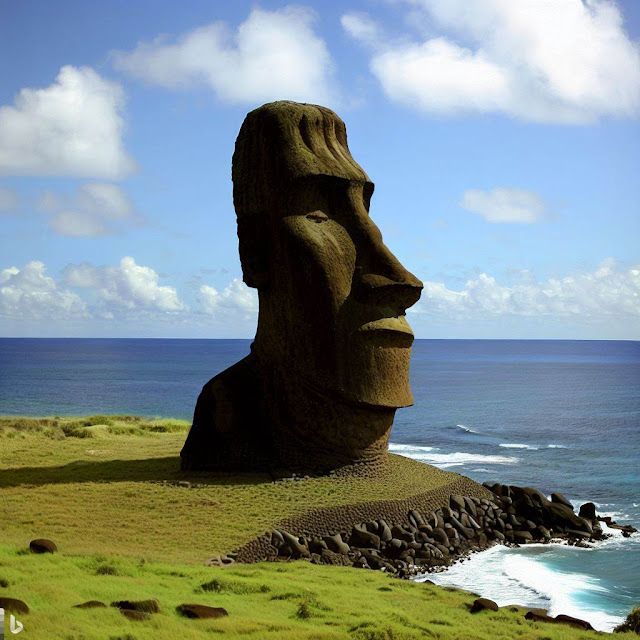April 5: Today in Science History: Celebrating the People and Events that Shaped Our World
Science is a never-ending quest for knowledge and discovery. Every day, scientists around the world make new observations, conduct experiments, and publish their findings. Some of these discoveries have changed the course of history and shaped our understanding of the natural world. In this blogpost, we will look at some of the events that happened on this day in science history.
1722: Jacob Roggeveen discovers Easter Island
On April 5, 1722, Dutch explorer Jacob Roggeveen became the first European to visit Easter Island, a remote island in the Pacific Ocean famous for its giant stone statues called moai. Roggeveen was on a voyage to find Terra Australis, a mythical continent south of Asia. He named the island Paasch-Eyland (Easter Island) because he arrived there on Easter Sunday. He was amazed by the sight of hundreds of moai, some of them up to 10 meters tall and weighing several tons. He also encountered the native Rapa Nui people, who had a complex culture and language. Roggeveen spent only a few days on the island before continuing his journey. The origin and purpose of the moai remain a mystery to this day ¹.
1903: The Wright brothers apply for a patent for their flying machine
On April 5, 1903, American inventors Orville and Wilbur Wright filed an application for a patent for their flying machine, which they had successfully tested at Kitty Hawk, North Carolina, on December 17, 1903. The patent described a machine that could fly in the air by means of propellers and rudders, and that could be controlled by the pilot by shifting his weight or manipulating levers. The patent also included drawings and diagrams of the machine and its parts. The patent was granted on May 22, 1906, as US Patent No. 8213932. The Wright brothers are widely regarded as the pioneers of aviation and the first to achieve powered flight.
1923: Firestone Tire and Rubber Company begins producing inflatable tires
On April 5, 1923, Firestone Tire and Rubber Company began mass production of inflatable tires at its factory in Akron, Ohio. Inflatable tires were invented by Scottish engineer John Boyd Dunlop in 1888 as a way to improve the comfort and speed of bicycles. He patented his invention in 1889 and founded the Dunlop Pneumatic Tyre Company. Inflatable tires soon became popular for automobiles as well, as they reduced vibration and noise and increased traction and durability. Firestone Tire and Rubber Company was founded by Harvey Firestone in 1900 and became one of the largest tire manufacturers in the world. Firestone was also one of the first companies to use mass production techniques and assembly lines to increase efficiency and lower costs ³.
1951: Julius and Ethel Rosenberg are sentenced to death for espionage
On April 5, 1951, Julius and Ethel Rosenberg were sentenced to death by a federal court in New York for conspiring to commit espionage for the Soviet Union during World War II. The Rosenbergs were accused of passing atomic secrets to Soviet agents, including information about the Manhattan Project, which developed the first atomic bombs. The Rosenbergs were members of the Communist Party of America and had contacts with several Soviet spies. They were arrested in July 1950 and tried in March 1951. They pleaded not guilty and maintained their innocence throughout the trial. They were convicted by a jury on March 29, 1951, and sentenced to death by Judge Irving Kaufman on April 5, 1951. They were executed by electric chair at Sing Sing prison on June 19, 1953. The Rosenberg case was one of the most controversial and divisive episodes of the Cold War era.
References
1: https://www.onthisday.com/science
2: https://www.livescience.com/news
3: https://todayinsci.com/ : https://www.history.com/this-day-in-history/rosenbergs-sentenced-to-death

.jpeg)
.jpeg)
.jpeg)
.jpeg)
Comments
Post a Comment